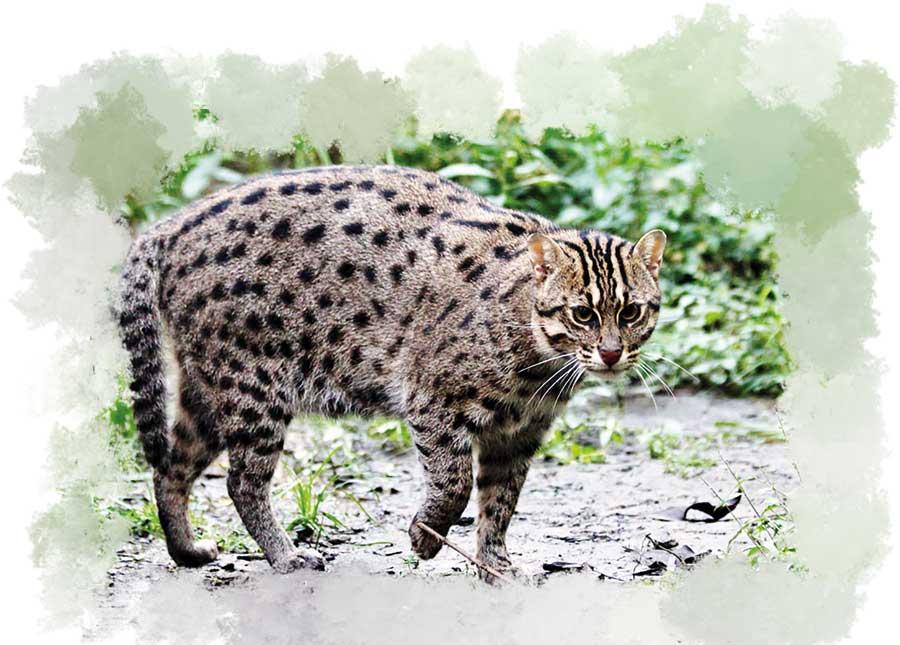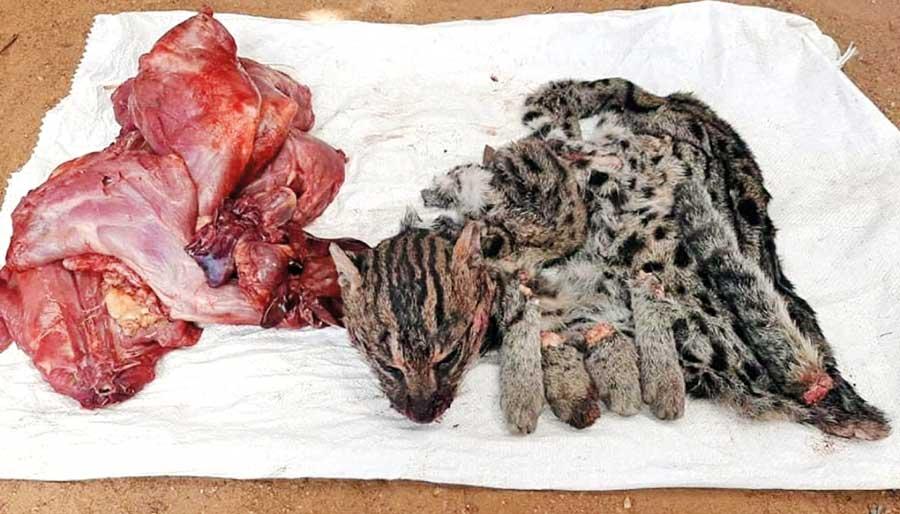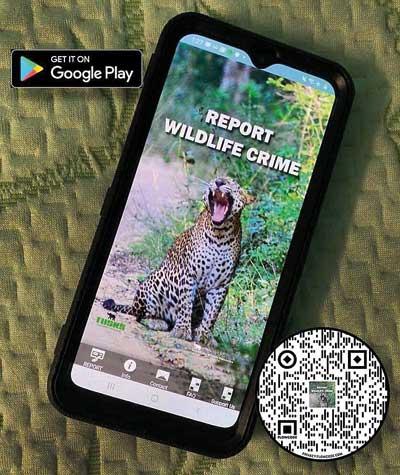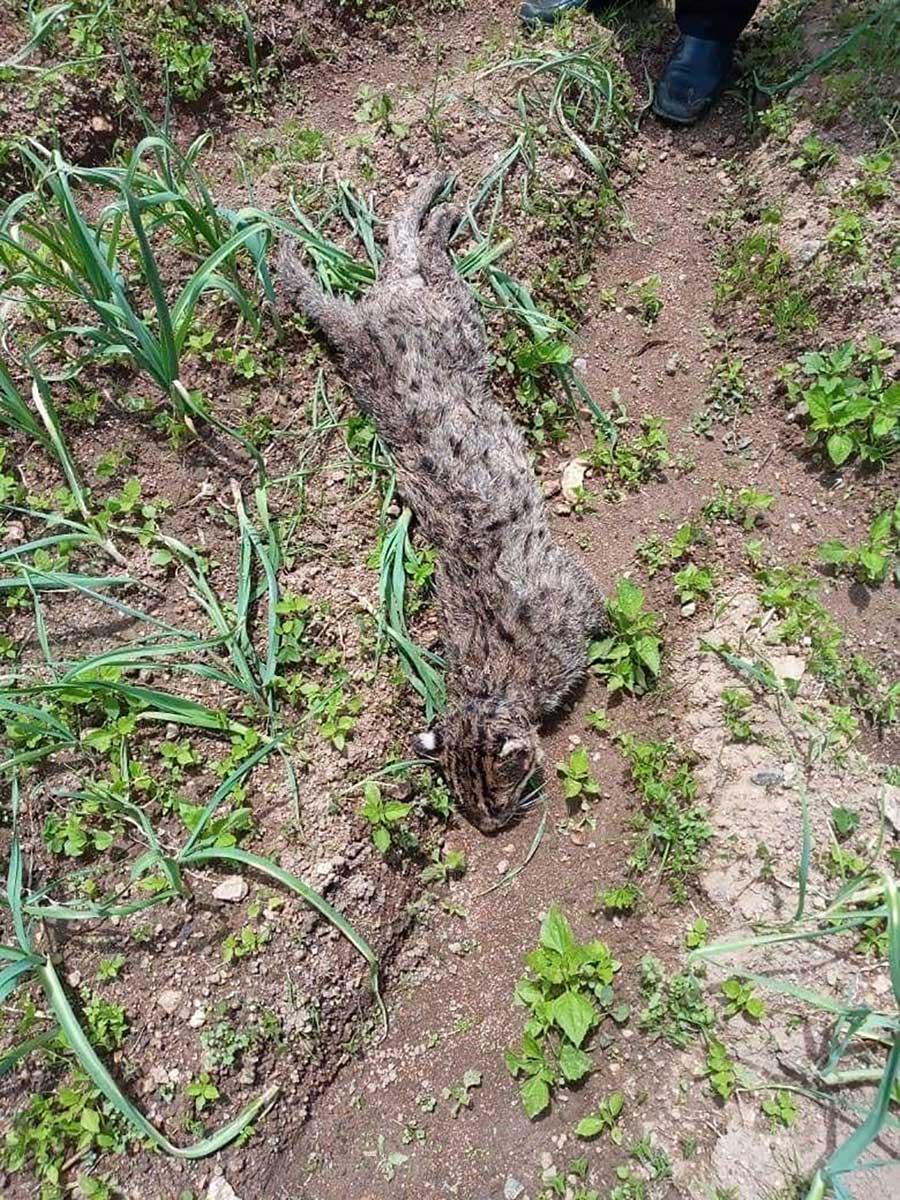16 Oct 2020 - {{hitsCtrl.values.hits}}

Fishing cats are found all throughout Sri Lanka, from coastal wetlands to dense forests in the hill country
- Fishing cats play a major role in the food chains in ecosystems
- Existing laws need to be strengthened and enforced
- Public can report wildlife crimes via ‘Report Wildlife Crime’ App
- Public consider all wild cat species as a potential danger
Days after three persons were nabbed while transporting body parts and flesh of a leopard, a dismembered body of a fishing cat was found from Polonnaruwa on September 28. The wild cat had reportedly come to a home  garden to catch fish from a pond when it was killed before being butchered. One suspect was arrested and was produced to courts the following day and further remanded for 14 days. Around 24 hours later the body of another fishing cat that had died after being caught to a snare was found in Nuwara Eliya. Alongside the leopard, the fishing cat too has been listed under the vulnerable category in the International Union for Conversation’s (IUCN) Red List of Threatened Species 2020-2. This means the species are threatened with global extinction.
garden to catch fish from a pond when it was killed before being butchered. One suspect was arrested and was produced to courts the following day and further remanded for 14 days. Around 24 hours later the body of another fishing cat that had died after being caught to a snare was found in Nuwara Eliya. Alongside the leopard, the fishing cat too has been listed under the vulnerable category in the International Union for Conversation’s (IUCN) Red List of Threatened Species 2020-2. This means the species are threatened with global extinction.
With that in mind the Daily Mirror sheds light on why it’s important to protect Sri Lanka’s fishing cat and how people can assist in reporting wildlife crimes in future.
The future of Sri Lanka’s second largest endangered wild cat
According to Section 30 of Flora and Fauna Protection Ordinance (FFPO) any person found guilty of wounding, harming or killing an animal that is not included in Schedule II of the Ordinance will be liable to a fine and a jail term depending on the nature of the crime. Schedule II includes a list of animals that are not protected. But that doesn’t keep poachers and those involved in wildlife crimes from capturing these animals and selling them for meat behind closed doors. According to Ashan Thudugala, co-founder of Small Cat Advocacy and Research (SCAR) the global population of fishing cats would drop to a further 30% within the next 15 years.

Fishing cat cut and cleaned for bushmeat sale or consumption in Polonnaruwa
Excerpts :
Q How does the fishing cat contribute to the ecosystem?
The Fishing cat Prionailurus viverrinus (Carnivora:Felidae) is the second largest endangered wild cat inhabiting hill country wet zone and dry zone forests in Sri Lanka. As the name implies fishing cats are associated with water rich habitats like wetlands, marshes, mangroves, riverine habitats. In addition to that the fishing cats in Sri Lanka can also be found in the hill country and the City of Colombo. Large mammalian carnivores and mesocarnivores are ecologically important because relatively few individuals can cause strong predation-driven direct effects or fear driven indirect effects that can ripple through communities and, ultimately, influence ecosystem structure and function. As a top predator in many habitats, fishing cats play a major role in the food chains in the ecosystems.
Q What is the rough count of fishing cats in Sri Lanka?
So far, we do not have a proper count for the number of fishing cats in the wild here in Sri Lanka. However, the IUCN Redlist of 2016 categorises the fishing cat as Vulnerable A2cd+3cd+4cd ver 3.1, and in Sri Lanka, the species is categorised as Endangered under the National Redlist of 2012. Habitat loss and destruction, along with the killing of fishing cats by local people throughout the species’ range has led to a global population decline suspected to be 30% or more, in the past 15 years and it is likely that in the next 15 years there will be a drop of a further 30% in the global population.
Q Are they frequently found in areas the two incidents were reported?
Fishing cats are found all throughout Sri Lanka, from coastal wetlands to dense forests in the hill country. As long as there is a clean, water rich habitat present, there is a high chance that you will find fishing cats.
Q How aware are people of these species and are they seen as a threat like the leopard or elephant? 
Many people have a general idea about the small wild cats we have in the country, although depending on the region, they use different nomenclature to address different species. The general public usually considers all wild cat species (both big and small) as a potential danger to humans.
Fishing cats are a Schedule II species under the Flora and Fauna Protection Ordinance and are therefore given full protection. The killing, capturing (without necessary Department of Wildlife permits), keeping as pets, or owning their body parts either for personal use or trade, is illegal and immediate actions should be taken according to the law.
However, there have been numerous incidents over the past few months involving fishing cats and leopards being snared, and in some cases, killed for bushmeat. There have even been some cases of people keeping them as pets or kept by hotels and rest houses for wildlife tourism purposes, right here in Sri Lanka.
Q What more needs to be done to protect this strictly protected species from falling prey to snares and eventually the bush meat trade?
Snaring is widely used to catch species like wild boar, sambar, spotted deer and other small species used for venison. Snares do not discriminate, and more often than not, other species get caught to them too, including wild cats. There are only few known records of fishing cats being used for bush meat around the country. But with the growing number of people using services like Facebook and Whatsapp, and people being aware of how wrong it is to trap such species, it is possible that more and more cases like the ones we have had over the past few months will come to light.
In order to control these threats, our existing laws need to be strengthened and enforced. It is also important that community awareness and engagement is encouraged in areas where poaching and snaring is prevalent.
‘Report Wildlife Crime’ App launched
Continuing its efforts to mitigate wildlife crimes that happens in a global scale, Serendipity Wildlife Foundation recently launched the ‘Report Wildlife Crime’ App, the first of its kind in Sri Lanka. By launching the App the Foundation hopes to encourage more people to report wildlife crimes anonymously or by submitting their name. The App could be downloaded via Google Play Store. Currently it cannot be loaded on an iPhone but the Foundation is working on it as well. The App was exclusively launched in Sri Lanka and later on Kenya too will be included on the list and it will be available worldwide thereafter.
However you could also report wildlife crimes directly to the Department of Wildlife or the nearest Police Station. Wildlife crimes could also be reported to https://www.csiwildlife.org/wildlife-crime. Every report submitted to the App will be handled by one of their trained investigative analysts. They will review and attempt to substantiate the crime, and get the information into our secure database. If it is a crime that can be initially investigated by an Analyst, the case will be assigned to one. After an initial investigation, a report will be submitted with possible leads, suspect information, and any other relevant details to the appropriate agency. If the investigation shows possible connections with international crime, the team will investigate it and work with several of its partner agencies worldwide. Currently the team is investigating on two crimes originating from Sri Lanka and another one from Europe.

Fishing cat killed by a snare in Nuwara Eliya
27 Nov 2024 2 hours ago
27 Nov 2024 3 hours ago
27 Nov 2024 3 hours ago
27 Nov 2024 4 hours ago
27 Nov 2024 4 hours ago